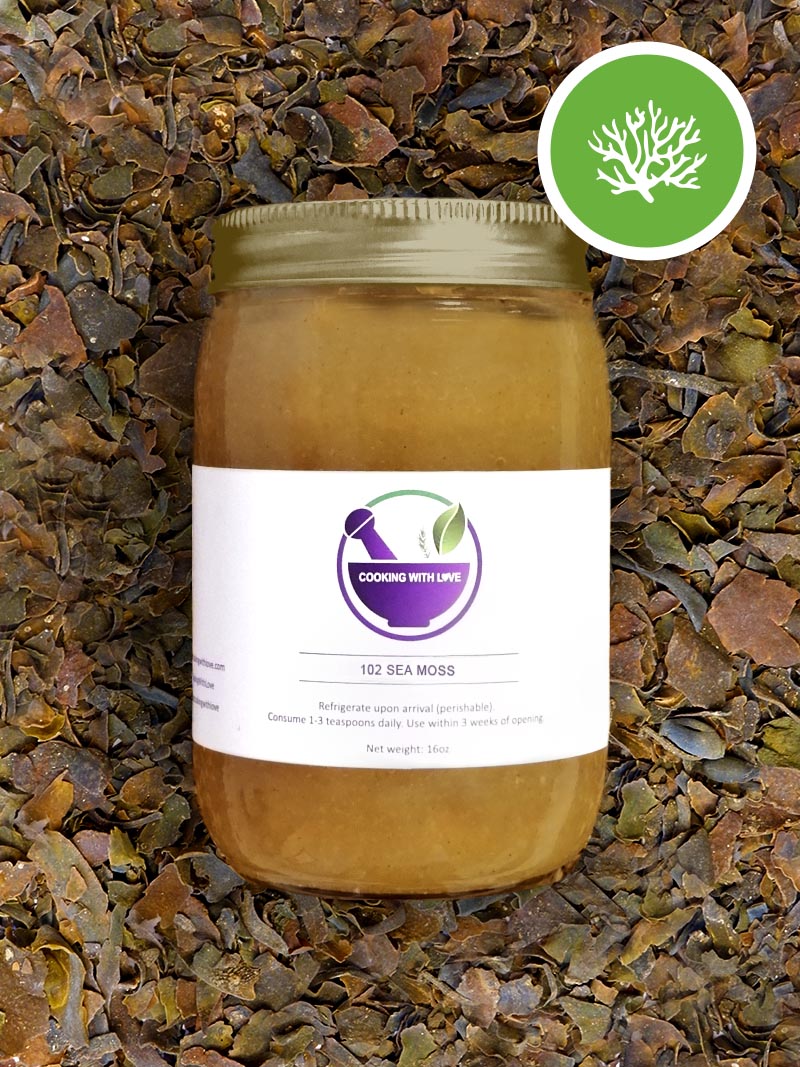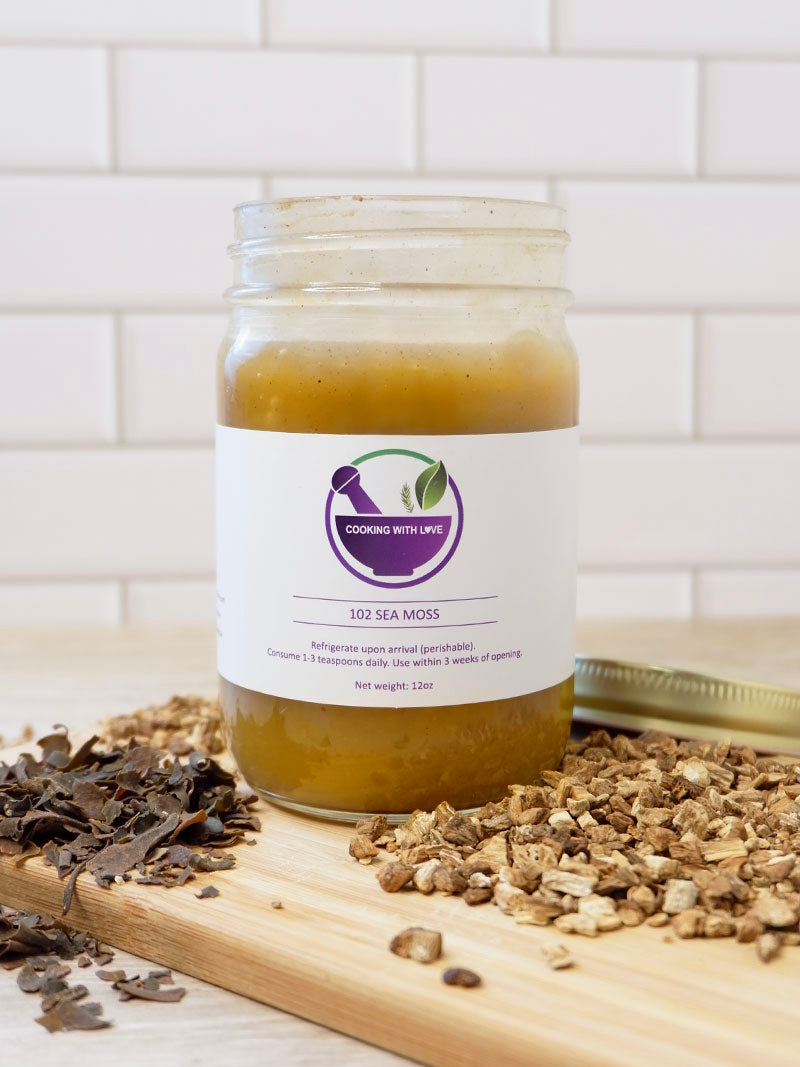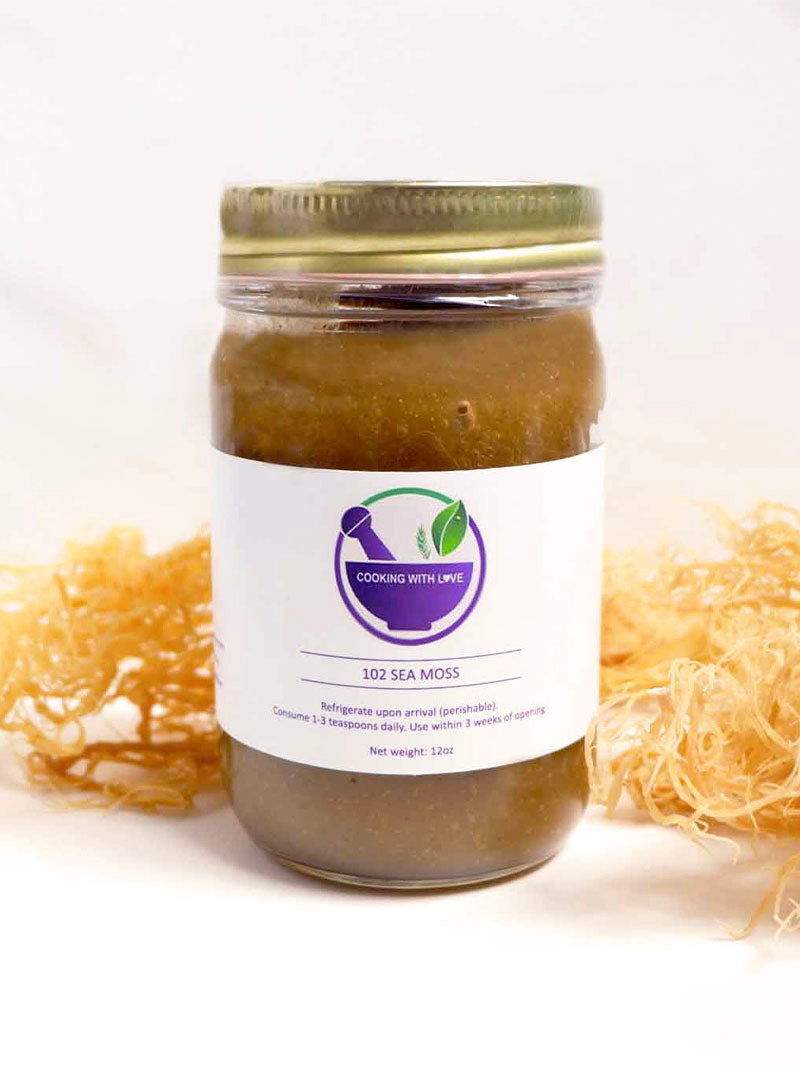Article: How to Make Sea Moss Gel at Home: Easy DIY Guide
How to Make Sea Moss Gel at Home: Easy DIY Guide

Making sea moss gel at home is a simple and rewarding process. It's perfect for anyone looking to enhance their diet with this nutrient-rich superfood.
By rehydrating dried sea moss, blending it with water, and allowing it to set, you can create a versatile gel. This homemade gel offers a great source of essential nutrients, including iodine, calcium, and potassium, providing significant health benefits.
In addition to its nutritional value, sea moss gel serves as a natural thickening agent for cooking. It is also popular in skin and hair care regimes.
Understanding its versatility can inspire you to incorporate it into various aspects of daily life.
For those curious about storage, sea moss gel should be kept in the refrigerator, where it lasts up to three weeks. This ensures you always have a fresh and potent batch on hand, opening the door to numerous culinary and wellness applications.
Benefits of Sea Moss Gel
Sea moss gel offers a range of benefits, from its impressive nutritional profile to various health advantages and culinary versatility. Incorporating this natural gel into daily routines can enhance overall well-being and add a unique touch to meals.
Nutritional Value
Sea moss gel is rich in essential minerals and vitamins. It contains iodine, which supports thyroid health, and magnesium, which aids muscle function.
This seaweed is also a source of calcium and potassium, promoting bone and cardiovascular health. Unlike many supplements, sea moss gel is naturally packed with nutrients like vitamins A, C, and E, which are vital for immune function and skin health.
Its nutrient profile makes it a valuable addition to a balanced diet, providing necessary elements without added synthetic components.
Health Advantages
Regular consumption of sea moss gel can lead to several health benefits. It may help boost the immune system due to its high vitamin and mineral content, including zinc and selenium.
The presence of omega-3 fatty acids supports heart health and reduces inflammation. Additionally, sea moss gel has been linked to improved digestion, thanks to its carrageenan content, which acts as a prebiotic. This can help promote a healthy gut environment.
Moreover, some studies suggest it may assist in weight management by enhancing metabolism and providing a feeling of fullness.
Culinary Uses
Sea moss gel is versatile in the kitchen, offering various culinary applications.
It can be seamlessly incorporated into smoothies, providing a nutrient boost without altering the flavor significantly. The gel's gelatinous texture makes it an effective thickening agent in soups and sauces.
Its mild flavor allows it to be used in both sweet and savory dishes, adding nutrients without overpowering other ingredients. Sea moss gel is also commonly used in vegan recipes as an alternative to gelatin, making it an excellent option for those following plant-based diets.
Types of Sea Moss
Sea moss comes in different varieties, each offering unique characteristics and potential health benefits. Understanding these variations can help you choose the best type for their specific needs. This section explores three popular types: Golden Sea Moss (Eucheuma Cottonni), Purple Sea Moss, and Irish Sea Moss ( Chondrus Crispus).
Golden Sea Moss

Golden Sea Moss, also known as Eucheuma Cottonii, is commonly found in warm, tropical areas. It is prized for its neutral flavor and versatility, making it a popular choice for culinary uses.
The golden hue comes from its rich beta-carotene content, an important antioxidant.
This type of sea moss is often used in smoothies, gels, and cosmetic products due to its thickening properties. Despite the mild taste, it is naturally packed with essential minerals like magnesium and potassium, which support overall well-being. Golden Sea Moss is a preferred choice for those new to sea moss due to its subtle taste and ease of use.
Purple Sea Moss
Purple Sea Moss, also known as Gracilaria, differs from other types due to its deep purple color, which signifies high concentrations of anthocyanins. These compounds are powerful antioxidants found in many other purple or blue foods, providing potential health benefits.
This variety is often harvested from the Caribbean and is known for having a stronger, more intense taste compared to Golden Sea Moss. People often choose Purple Sea Moss for its higher antioxidant content and potential anti-inflammatory properties. The richness in vitamins and minerals makes it a favorite for those looking to enhance their diet with nutrient-dense foods.
Irish Sea Moss
Irish Sea Moss, scientifically known as Chondrus Crispus, is native to the Atlantic coasts of Europe and North America. It is traditionally harvested from the rocky shores of Ireland, hence its name. This type is distinguishable by its more coarse and leafy texture.
Irish Sea Moss is popular in traditional Irish cuisine, particularly in desserts and drinks. It is originally consumed for its potential to support skin health and provide immune system benefits.
Packed with iodine, it supports thyroid function, while also being a vegan source of essential nutrients. Due to its historical use, Irish Sea Moss holds a special place in herbal traditions and contemporary health practices.
Selecting Quality Sea Moss
Choosing the right sea moss is crucial for getting the best gel quality. The type, appearance, and source of sea moss impact its nutrients and effectiveness in gel preparation.
Organic vs. Farmed
Organic sea moss is typically harvested directly from its natural habitat in the ocean, ensuring it absorbs nutrients from a pristine environment. It tends to have a higher mineral content compared to farmed sea moss.
Farmed sea moss is cultivated in controlled environments. While it's often more affordable, it may contain fewer nutrients. Some farmed moss is grown using fertilizers or chemicals, potentially affecting its quality and benefits. Understanding the origin and cultivation methods helps in making a safer choice.
Appearance and Texture
Quality sea moss should have a natural color ranging from light golden to dark purple. It should not be too soft or slimy. The ideal texture is somewhat elastic and dry, indicating that it has been sun-dried properly.
Avoid sea moss that appears bleached or uniformly white, as it may have been chemically treated. Fresh sea moss has a mild, ocean-like scent and lacks any strong or unpleasant odor. The presence of other particles like sand or salt is normal, but should not dominate its appearance.
Source and Sustainability
Where sea moss is sourced matters for both quality and environmental impact. Ethically and sustainably sourced sea moss supports ecosystems and local communities.
Ideally, it should come from clean, unpolluted waters to ensure purity.
Preparation Essentials
Mastering the art of making sea moss gel begins with understanding the essential steps in preparation. These include cleaning the sea moss thoroughly, determining the optimal soaking ratio, and gathering the necessary equipment to ensure a smooth process.
Cleaning the Sea Moss
Cleaning sea moss thoroughly removes any residual salt, sand, and debris. Start by rinsing the sea moss under cold running water, rubbing it gently with your hands to dislodge impurities. Repeat this process multiple times until the water runs clear.
Using a large bowl, cover the sea moss with water. Inspect for impurities and continue rinsing. This ensures clean, pure sea moss ready for the next step. Cleaning is crucial, as it impacts the gel's texture and taste.
Soaking and Ratio
Soaking is vital for softening sea moss and enhancing its nutrient absorption.
Place cleaned sea moss in a bowl and immerse it in filtered water. The typical soaking duration ranges from 12 to 24 hours, allowing the moss to swell and soften.
The water-to-sea-moss ratio affects the gel's consistency. A common practice involves covering the sea moss with water until it is fully submerged, ensuring it has room to expand. Adjust the ratio based on personal preference for a thicker or thinner gel.
Equipment Needed
Preparation requires minimal yet essential equipment. A high-speed blender is crucial for achieving a smooth gel consistency.
Other items include a large bowl for soaking, a strainer to remove excess water, and a clean jar with a lid for storage.
A spoon or spatula will help in transferring the blended gel into storage containers. Ensuring that these tools are clean and ready beforehand streamlines the process, making sea moss gel preparation efficient and straightforward.
Making the Gel
Creating sea moss gel requires careful attention to the blending process, achieving the right consistency, and proper storage. By focusing on these steps, the gel can be made effectively and maintained for long-term use.
Blending Technique
After soaking the sea moss for 12 to 24 hours, it should be drained and rinsed. This soaking allows the sea moss to expand and soften, making it easier to blend into a smooth gel.
Add the sea moss to the blender with fresh spring water. The usual ratio is about one cup of soaked sea moss to two cups of water. Blend until a creamy, smooth gel forms. Adjust water quantity to achieve desired thickness.
Storage and Shelf Life
Proper storage extends the gel's shelf life. After blending, transfer the gel to a clean jar with a lid. It's recommended to use an airtight container to keep the gel fresh.
Store the gel in the refrigerator where it can last for up to three to four weeks. Freezing is an option for longer preservation. Some prefer to freeze the gel in ice cube trays for easy portioning. Be mindful of strong odors, as sea moss can absorb them, affecting taste and aroma.
Incorporating into Recipes

Sea moss gel is a versatile ingredient that can be effortlessly used in various culinary and skincare applications. It enhances smoothies, desserts, and even homemade cosmetics, offering a nutritious and natural option for many recipes. Below are different ways to incorporate sea moss gel into your daily routine.
Smoothies and Beverages
Sea moss gel is an excellent addition to smoothies and drinks because of its nutritious profile and neutral taste.
By blending it with fruits like bananas, berries, or mango, sea moss gel can increase the nutritional value of smoothies while providing a thicker texture.
Adding two tablespoons of sea moss gel to a morning smoothie is beneficial for its high iodine and antioxidant content. It also pairs well with ingredients like almond milk or spinach, making it a perfect match for health-conscious consumers.
For beverages, combining sea moss gel with natural sweeteners or herbal teas can result in refreshing drinks. This practice not only boosts nutritional knowledge significantly but also introduces new flavor dimensions.
Desserts and Sauces
Sea moss gel can also be incorporated into desserts and sauces, acting as a natural thickener.
In puddings, pies, or jams, it stabilizes textures without altering flavors. The gel has a neutral taste, ensuring it complements a wide range of sweet ingredients like chocolate and vanilla.
Using sea moss gel in custards or mousses helps achieve a creamy consistency. One can mix it into existing recipes by replacing gelatin or cornstarch, benefiting from its numerous nutrients like calcium.
For sauces, sea moss gel creates thickness and stability in fruit or chocolate sauces, making them rich and glossy. Adding it to recipes provides a healthful twist without compromising taste or texture.
Homemade Skin Care
Beyond the kitchen, sea moss gel finds a place in homemade skincare routines. It is known for its mineral-rich composition, which hydrates and revitalizes the skin.
Applying it as a face mask helps soothe irritation and improve skin elasticity.
To make a sea moss gel face mask, combine the gel with ingredients like honey or aloe vera for added nourishment. This blend is gentle and suitable for all skin types, giving users a natural skincare option.
Incorporate sea moss gel into lotions or hair masks for enhanced moisturizing benefits. Its presence in these products delivers vital nutrients, promoting healthier skin and hair.
Common Mistakes to Avoid
One frequent mistake is improper soaking. Sea moss should be thoroughly rinsed to remove sand and debris before soaking for 12 to 24 hours in filtered or spring water. This helps in rehydrating the sea moss adequately.
Storing sea moss gel incorrectly can lead to spoilage. It should be kept in an airtight container in the refrigerator, where it can last up to three weeks. Room temperature storage can cause it to spoil more quickly and ruin the batch.
Maximizing Nutrient Retention
To retain nutrients, soak and blend with cool, clean water.
This ensures the gel retains its beneficial properties. Always use clean, high-quality materials throughout the process to prevent contamination that could destroy nutrients and reduce benefits.




